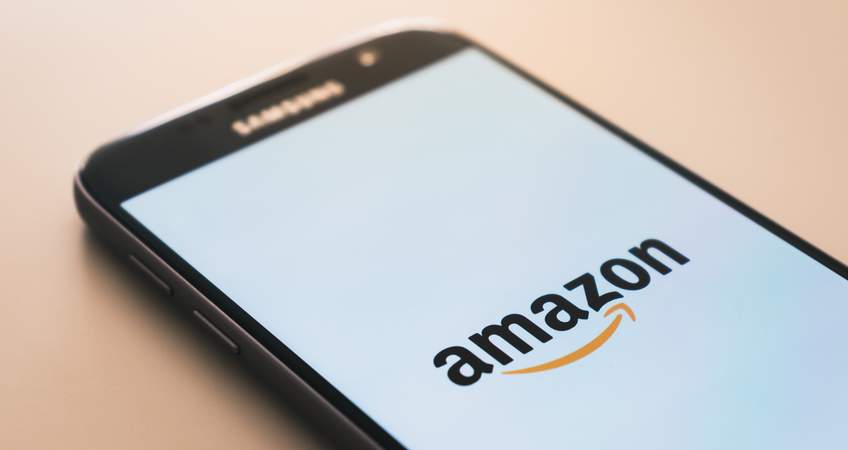
With the recent introduction of Amazon into the Australian market, the question being asked is how can Australian retailers flourish and fend off this threat?
One of the more pragmatic methods to find answers is to look across to US and UK retailers, find those who are succeeding, and dig deeper into their conduct.
In this analysis of the US and UK retailers, there are four fundamental activities proving to be effective when combating Amazon….
- Establishing and enhancing omnichannel experiences
- Increase the accessibility of support via online chat
- Heavy effort and investment in SEO and SEM
- Partnering with Google Express
Before looking at the above four, first a brief summary as to what retailers are up against.
What Australian Retailers are up against?
Retailers look at Amazon as this retail behemoth, but their success has come as a result of a 20 year investment into nailing the online retail basics.
Jeff Bezos has been preaching to Amazon shareholders, the future success of Amazon comes from heavy investment in perfecting and delivering what’s most important to consumers.
One example of this can be seen in the 2013 shareholder letter written by Jeff Bezos where he states the importance of sacrificing profits to invest in “long-term customer loyalty and product opportunities that will create bigger profits in the future”.
This ethos created an advantage for Amazon.
A small portion of the Jeff Bezos shareholder letter of 2013…
The way most companies do business is to focus primarily on today’s bottom line: The prevailing ethos in corporate America, after all, is that companies exist to make money for their owners–and the more and the sooner the better–so every decision should be made in the context of that.
The result of this is that many (most?) companies scrimp on things like long-term investments, customer service, product quality, and employee compensation, in the interest of delivering a few more pennies to this quarter’s bottom line.
Retailers need to take a few pages (if not more) out of the Amazon book of foundation building.
Today, you have retailers who curse Amazon’s success, but the question needs to be asked of ALL retailers….
- How much have you invested to perfect the online retail basics in the effort to deliver the highest standard possible?
- How long has your organisation been preaching the customer is the centre of the universe?
- How long has investment gone into supporting this customer centric focus?
It’s common to have executive teams say the right things, but when it comes to resource allocation and investment, they live in contradiction.
Amazon deserves to be where they are! But it’s not too late for retailers to enable growth in a market where Amazon is your neighbour.
Function 1 – Building out Omnichannel
It’s not ground-breaking news to learn consumers want a seamless retail experience across all touchpoints (both digital and physical). What IS making news is the low standard of omnichannel conduct across a high percentage of retailers around the world.
A new report coming from L2 and Google Canada found….
A shabby omnichannel environment in Canada has pushed consumers to look across the border for eCommerce, clearing the field for Amazon.
For those retailers who are winning, they are doing one of two things when delivering strong omnichannel experiences:
- Heavy investment is undertaken to ensure the omnichannel foundation is in place to scale. Translation, these retailers are working hard to nail the omnichannel basics.
- For those who have the omnichannel basics in place, they are leveraging these omnichannel capabilities by building out and enriching experiences to a new level.
“Building out” means, these retailers are working hard to find new consumer needs that have not yet been met. This deeper view into delivering better omnichannel experiences can only be determined once the omnichannel foundation is in place.
One example of enhancing omnichannel would be an in-store mapping capability for the smartphone version of the site (to help consumers find products in store).
With 90% of retail sales still occurring in store, the ability to build out experiences where devices can be used to enhance in store experiences will drive physical purchase conversion rates. A recent study found 73% of consumers used their smartphone while trying to make a purchase in-store.
What can Australian retailers take away from this?
To either fix a low standard omnichannel experiences or build out omnichannel capabilities requires the leadership and guidance of a senior online customer experience strategist to lead, support and drive the change required. Connecting with this type of individual is a crucial first step and is a skill set rarely found in-house.
Function 2 – Improving support and accessibility through the use of online chat
Let’s be clear here, this function is NOT talking about chatbots. Chatbots are programmatic conversations based on pre-set scenarios.
"Function 2" is about making frontline employees available to engage with consumers who are online trying to information gather or buy on a retailer’s site and needs assistance.
The online chat function adds value to both the consumer and the business in many ways….
#1 Employee accessibility maintains a consumer’s buying momentum
When consumers are in buying mode (have intent) they are seeking out content to assist in decision making. In the physical store scenario employees are easily accessible (most of the time).
Online chat delivers the same in store experience of employee accessibility. If the content is insufficient online and the consumers want to continue to engage, online chat is a far more appealing option than picking up the phone or sending an email because they want their question answered immediately.
Consumers are on a journey that does not want to be paused or interrupted with a lengthy delay.
#2 Identifying confusion brought on by underperforming technology
Both the retailer and its eCommerce technology vendor conduct rigorous testing of its functionality, however, there is no truer test of its effectiveness when consumers engage with it.
With the right feedback loops in place (such as online chat) retailers can identify the issues brought on by poorly implemented functionality across all devices.
#3 Amazon cannot mirror this supportive experience
Amazon will never be able to mirror this level of support experience due to their size, the broad range they carry, and the fact they are a marketplace. They are ill equipped to answer questions for products from another retailer.
This poses a great opportunity to develop a point of difference for retailers.
#4 Online Chat relieves “consumer pain” created from the shortcomings of the site
When consumers have buying intent, and are seeking out information to assist in decision making, they expect a site to answer all their questions.
When these expectations are not met, frustration ensues creating a painful experience.
Online chat is the retailer’s ability to recover from the pain they created.
#5 Consumers who use online chat convert higher than those who don’t
After analysing 2.8 million sessions from some of the top fashion retailers in Australia, the conversion rate of consumers who did not use online chat 1.1%, the consumers who used online chat converted at 7.8%.
A survey showed 31% of consumers stated, “they would be more likely to purchase after a live chat”.
When asking consumers why they like online chat, the most popular response was “I get my questions answered immediately”.
Figure 1 is the results of a consumer survey showing the top reasons as to why consumers like online chat…
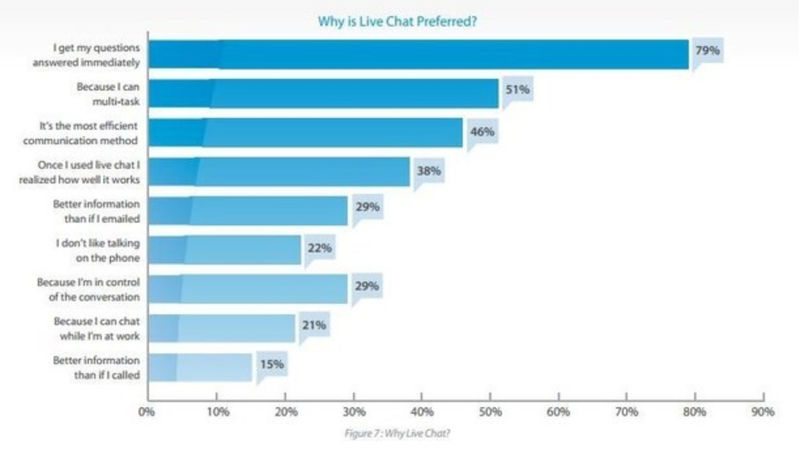
#6 The data from online chat defines the content and technology road map
The right online chat tool documents all conversations and identifies where in the site the conversation occurred. This insight helps the retailer understand the different types of pain the digital channel is causing and where its being caused.
This then becomes the road map for priority fixes, technical enhancements and content.
Function 3 – Heavy investment in SEO and SEM
While the SEO and SEM functions are globally known, its being called out because many retailers are losing site of its potency and as a result are losing their way by focussing more on other bright shiny new unproven digital toys.
Remarkably, PWC wrote a paper in 2017 titled “Building for the future: 10 investment areas for retailers”. Nowhere in this document do they discuss the investment of SEO and/or SEM.
Deloitte wrote a paper called “Omni-channel retail – A Deloitte Point of View”, in it they determine three pillars to retail success, one of them being what they call “Omni-channel marketing”.
Within Deloitte paper, a survey was conducted by both retailers and consumers (based in the UK) and found “Search Engine Optimisation” was the most important channel for retailers to drive, and “Search Engines” was the most important tool consumers used when shopping online.
See the results from both surveys below (Figures 2 and 3):
Retailer Survey:
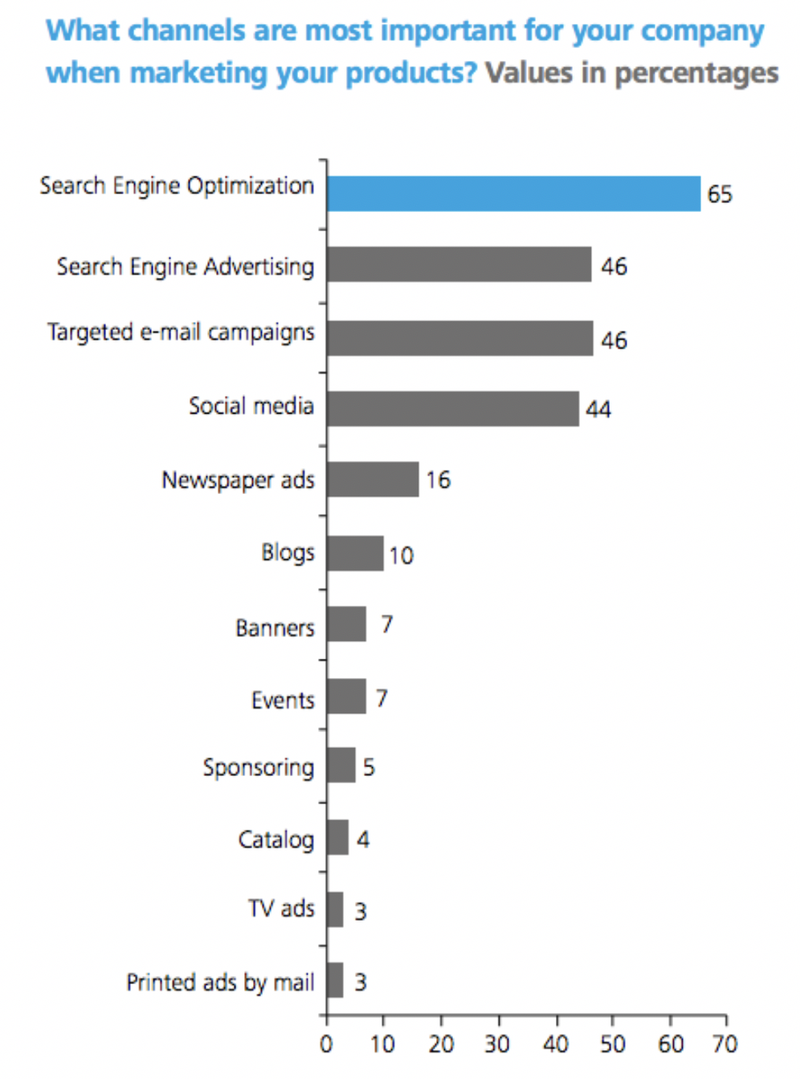
Figure 2
Consumer Survey:
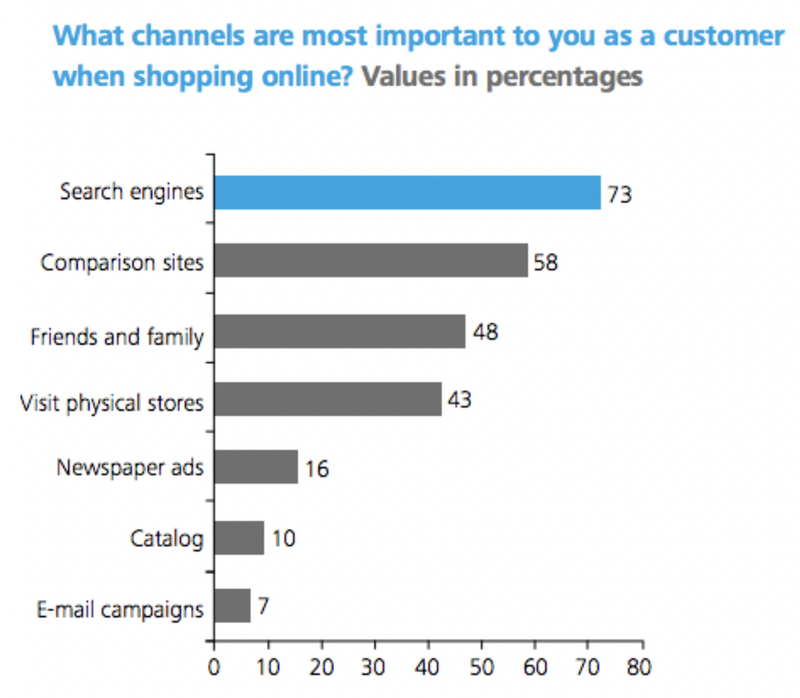
Figure 3
Google talks about the power of smartphones and how it has influenced and fragmented the use and treatment of their own search engine. This smartphone fragmentation of a consumer’s intent (or need to engage) is what Google calls a “micro moment”…
Micro-moments occur when people reflexively turn to a device—increasingly a smartphone—to act on a need to learn something, do something, discover something, watch something, or buy something. They are intent-rich moments when decisions are made and preferences shaped.
In these moments, consumers' expectations are higher than ever. The powerful computers we carry in our pockets have trained us to expect brands to immediately deliver exactly what we are looking for when we are looking. We want things right, and we want things right away.
Based on the above, we have….
- Consumers who still heavily rely on search engines
- We have retailers who agree being visible in search engines are important
- An appreciation of the manner in which search engines are now being used by consumers (micro moments)
So why are so few retailers doing a great job? There are many reasons, however, if there was one thing that consistently appears and reappears in the research, it would be the absence of credible vendors to support retailers in their need to shape best practice conduct around all the activities required for retailers to grow and leverage search engine visibility.
Unfortunately, these vendors whose output is to a low standard remain in business because retailers do not know what “great SEO/SEM conduct” looks like.
Bryan Eisenberg, world leader in customer experience design, and a consultant for Google, recently wrote an article titled “What to believe about SEO in 2018 and beyond?”. In this article Bryan states….
While there are many great SEOs out there, many have not evolved since the early days of keyword stuffing and meta tags. They also count on you (the retailer) not keeping up with all the constant optimization tweaks Google does to their algorithms to keep you in FUD (fear, uncertainty, and doubt).
If an SEO business requires hidden techniques to achieve results, it’s not selling SEO services, its selling snake-oil.
The evolution and trending around Google’s ranking signals all point to supporting retailers who deliver amazing online experiences.
What does this mean for retailers wanting more out of their SEO/SEM strategy? Engage with a customer experience design specialist who can architect amazing online experiences.
The outputs of experience design planning are specific SEO tactics in the form of a content strategy driving the right visibility strategy.
Function 4 – Work with Google Express
One can argue this is an extension of Function 3, but it is separate simply because it is a newer trend with retailers, and a new way to leverage Google.
Google Express is Google's response to Amazon's Alexa, where retailers can sign up to be visible for voice activated searches within the "Google Home" device.
Google Home is new to Australia but the voice activated device is selling fast. Google Home took its time getting to Australia because it needed to ensure Google’s system and infrastructure could handle the Australian accent.
Currently, 28% of large big box retailers in the US have partnered with Google Express:

While this sounds good it needs to be measured in context to Amazon’s Echo saturation in the market. Research has shown 15% of consumers in the US own an Echo vs 6% owning a Google Home device.
While "voice" is a bit of a buzz, it needs to be put in context at this stage. Are consumers using it to purchase? No! Figure 5 shows the most common uses for this device with the top two being listening to music and requesting information….
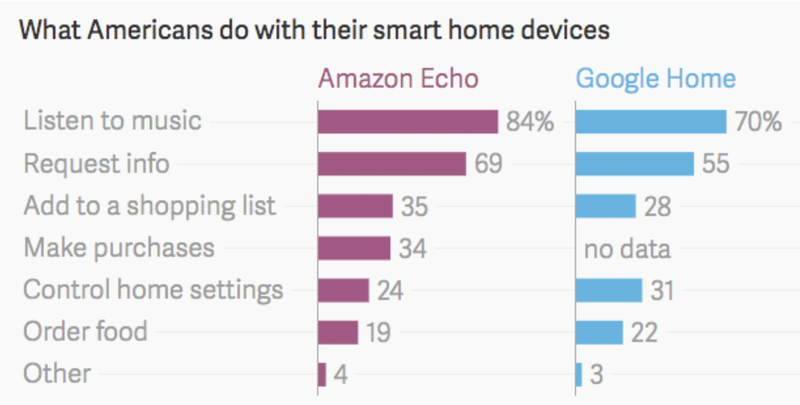
Figure 5
Conclusion:
For those who consider Amazon a threat to their growth, there are many moving business parts needing to come together. There is no shortage of capabilities to focus on. The challenge for retailers is to focus on the right things and steer away from the new digital toys that pop up all the time.
A great example of a US retailer growing despite Amazon is Williams-Sonoma. Williams-Sonoma has over 600 bricks and mortar stores and over the last 5 years has invested heavily in bolstering its omnichannel retail offering. As a result, it is showing continuous steady growth both in physical and digital retail.
With the right strategic focus combined with the right leaders leading the way, it can be done.
This article was as tagged as B2B , Customer Experience Design , Data Driven Decision Making , Digital Strategy , SEO